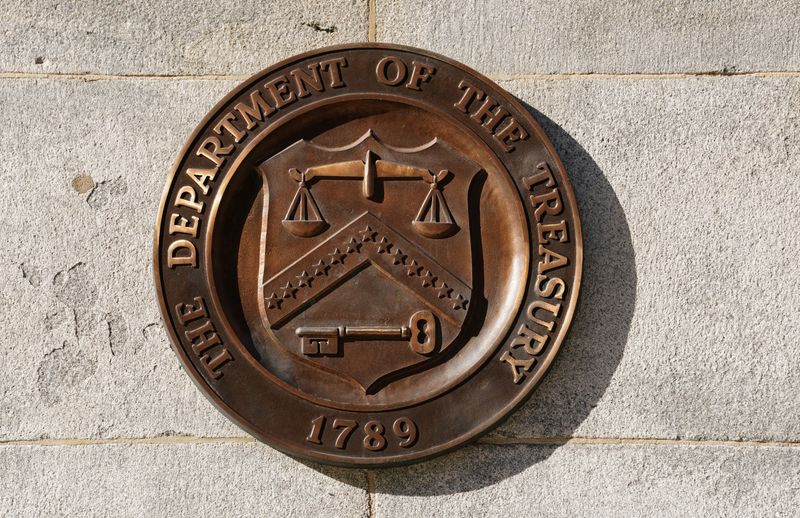US Treasury to issue more clean energy tax credit guidance by year-end
2023.09.08 05:19

© Reuters. FILE PHOTO: A bronze seal for the Department of the Treasury is shown at the U.S. Treasury building in Washington, U.S., January 20, 2023. REUTERS/Kevin Lamarque/File Photo
By David Lawder
WASHINGTON (Reuters) – The U.S. Treasury said on Friday it will provide guidance on additional clean energy tax incentives before the end of 2023, including a provision aimed at deterring companies from relying on Chinese supply chains.
Lily Batchelder, the Treasury’s assistant secretary for tax policy, declined to provide reporters with specific timing for the guidance on “foreign entity of concern” rules.
But she said the guidance would be released before year-end, along with guidance for the “45X” manufacturing production tax for clean energy products such as solar, wind, batteries and critical minerals components.
The auto industry is watching the rules for both credits as they make investment decisions on producing batteries for their transition to electric vehicles. The foreign entity of concern rules come into effect in 2024 for completed batteries and 2025 for critical minerals used to produce them.
A key decision in the guidance is whether Ford Motor (NYSE:) Co’s deal to license the technology of Chinese battery manufacturer CATL for use in Ford-owned U.S. battery plants will meet the Treasury’s standards to access the tax credits. The arrangement has raised concerns among U.S. lawmakers.
Batchelder said that in the near term, Treasury would release guidance on tax credits for investments in energy efficient home improvements and sustainable aviation fuel.
Other guidance expected before the end of 2023 includes Section 48 clean power investment tax credit and clean hydrogen tax credits.
According to initial estimates made when the Inflation Reduction Act (IRA) was passed in August 2022, the cost of its clean energy tax credits was estimated at around $369 billion over 10 years. Since then, strong demand for the credits from investment projects have prompted some analysts to estimate that the IRA’s fiscal costs could reach $1 trillion.








